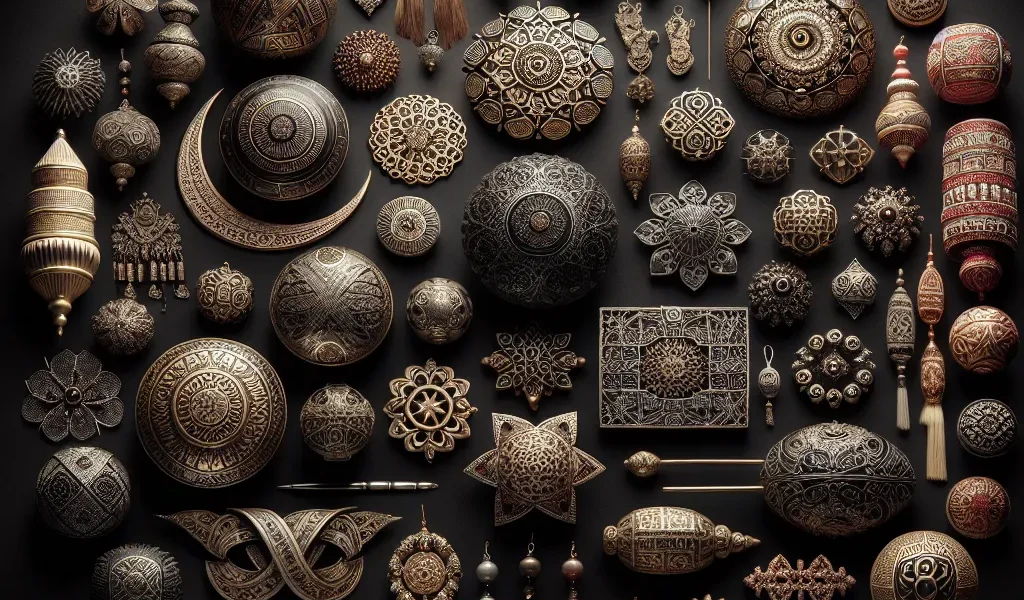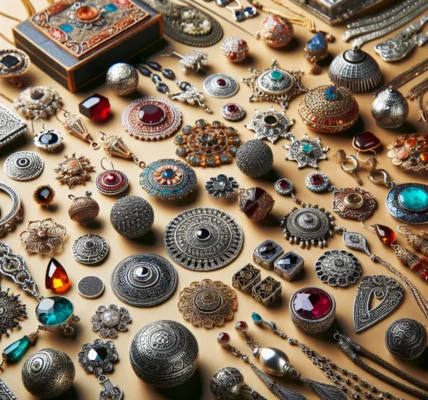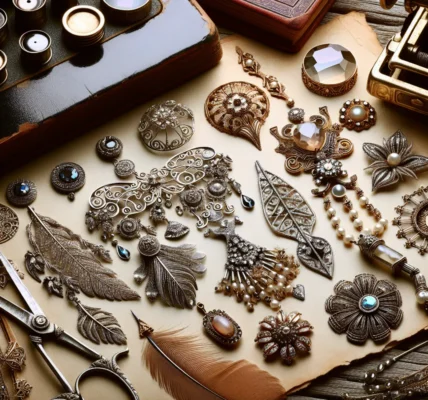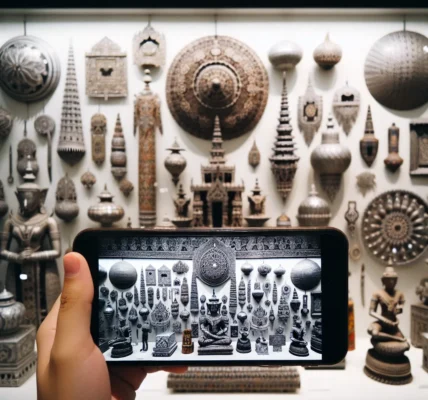Ancient Origins of Ornaments
Ornaments have a rich history that dates back to ancient traditions and cultures. The origins of ornaments can be traced to early human civilizations, where they were used as symbols of status, spirituality, and protection. Ancient civilizations such as the Egyptians, Greeks, and Romans adorned themselves and their surroundings with intricate ornaments made from a variety of materials including gold, silver, and gemstones.
For example, the ancient Egyptians used ornaments extensively in their daily lives and religious practices. They crafted elaborate jewelry, amulets, and decorative objects, often incorporating symbolic designs such as the Ankh, the symbol of life, and the Eye of Horus, a symbol of protection. These ornaments were not only decorative but also held significant cultural and religious meanings for the ancient Egyptians.
Similarly, the ancient Greeks were known for their ornate jewelry and decorative objects. They crafted detailed ornaments featuring mythological motifs, geometric patterns, and nature-inspired designs. These ornaments were highly valued and were often buried with the deceased as symbols of wealth and status in the afterlife.
The Romans also had a deep appreciation for ornaments, using them to adorn themselves and their homes. They favored intricate jewelry, such as rings, bracelets, and earrings, often set with precious stones and engraved with intricate designs. Ornaments were also used to embellish everyday objects, such as furniture, utensils, and clothing, showcasing the Romans’ penchant for opulence and luxury.
The ancient origins of ornaments laid the foundation for the cultural significance and artistic expression that continues to influence modern ornamentation. From ancient civilizations to modern-day trends, ornaments have evolved in style and material, yet they continue to reflect the timeless human desire for beauty, meaning, and self-expression.
Evolution of Ornamentation Through the Ages
Throughout history, ornamentation has played a significant role in various cultures and societies, evolving significantly over time. The origin of ornamentation can be traced back to ancient civilizations such as the Egyptians, Greeks, and Romans, who used intricate designs to adorn their clothing, jewelry, and architecture. These early forms of ornamentation often featured symbolic motifs and intricate patterns, showcasing the craftsmanship and artistic abilities of these ancient cultures.
As societies progressed, so did the evolution of ornamentation. The Middle Ages saw the rise of ornate religious ornaments, with elaborate decorations adorning cathedrals and religious artifacts. During the Renaissance, ornamental designs became more refined and detailed, reflecting the artistic and intellectual movements of the time. The Baroque and Rococo periods further elevated ornamentation, with opulent and lavish designs adorning everything from furniture to fashion.
With the onset of the industrial revolution, ornamentation underwent a significant shift. Mass production and mechanization led to the rise of more standardized and uniform designs, although artisanal craftsmanship continued to thrive in certain circles. The Arts and Crafts movement of the late 19th century, as well as the Art Nouveau and Art Deco movements of the early 20th century, revitalized interest in unique and artistic ornamentation, embracing natural forms and intricate patterns.
Today, the evolution of ornamentation continues with a blend of traditional influences and modern trends. Technological advancements have opened up new possibilities for innovative ornamentation, from digital designs to 3D-printed ornaments. Furthermore, contemporary artisans and designers continue to push the boundaries of ornamentation, drawing inspiration from diverse cultural influences and contemporary aesthetics. Whether it’s in the realms of fashion, interior design, or architecture, the history of ornamentation is a testament to the enduring human desire for beauty and creativity.
Cultural Significance of Ornaments
The history of ornaments stretches back through the ages, with roots deeply embedded in ancient traditions that have evolved to shape modern trends. Across various cultures, ornaments have held significant cultural importance, serving as symbols of status, beliefs, and traditions. In many societies, ornaments were intricately linked with spirituality and religious practices, such as the use of amulets and talismans for protection and blessings.
In ancient Egypt, ornaments like amulets and amulet necklaces were adorned with symbols of gods and goddesses, reflecting a profound connection to spiritual beliefs and offering protection to the wearer. Similarly, in ancient Rome, ornamental jewelry was used to denote societal status and was often buried with the deceased as a symbol of wealth and prestige in the afterlife.
The cultural significance of ornaments can also be seen in the intricate designs and motifs that reflect specific cultural identities. For instance, in the Maasai tribes of East Africa, beadwork ornaments are an integral part of their cultural heritage, with each color and pattern holding symbolic meaning, representing aspects of their lifestyle, rituals, and social structure.
In modern times, the cultural significance of ornaments continues to be a driving force in their design and usage. Many people still value ornaments as a way to connect with their cultural roots, whether through traditional motifs or by wearing ornaments that hold personal or familial significance.
Understanding the rich cultural significance of ornaments from different traditions provides a deeper appreciation for their enduring appeal and the meaningful role they play in our lives, serving as a bridge between the past and the present, between different cultures, and as a form of self-expression and connection to our heritage.
Contemporary Trends in Ornament Design
Contemporary trends in ornament design have evolved significantly, reflecting the changing tastes and preferences of modern society. In recent years, there has been a notable shift towards minimalistic and geometric designs, departing from the intricate and ornate styles of the past. This contemporary approach to ornamentation emphasizes clean lines, simplicity, and a focus on functionality.
Furthermore, sustainability has become a key consideration in modern ornament design. With growing environmental consciousness, designers are turning towards eco-friendly materials and production methods to create ornaments that are not only aesthetically pleasing but also environmentally responsible. Recycled materials, natural fibers, and innovative eco-friendly technologies are being integrated into ornament design to meet the demands of eco-conscious consumers.
Another prominent trend in contemporary ornament design is the fusion of traditional craftsmanship with modern aesthetics. Designers are reinterpreting traditional ornamentation techniques and infusing them with a contemporary twist, resulting in unique and captivating designs that blend the old and the new. This fusion of tradition and innovation appeals to consumers seeking products that honor heritage while embracing modernity.
Moreover, technology has had a profound impact on contemporary ornament design. Advancements in 3D printing, digital modeling, and computer-aided design have opened up new possibilities for creating intricate and innovative ornamentation. Designers are leveraging these technological tools to push the boundaries of traditional ornament design, resulting in cutting-edge and avant-garde creations that redefine the concept of ornamentation.
In conclusion, contemporary trends in ornament design reflect a fascinating interplay of minimalism, sustainability, tradition, and technology. As societal values and technological capabilities continue to evolve, the landscape of ornamentation is likely to witness further exciting developments and innovations.




